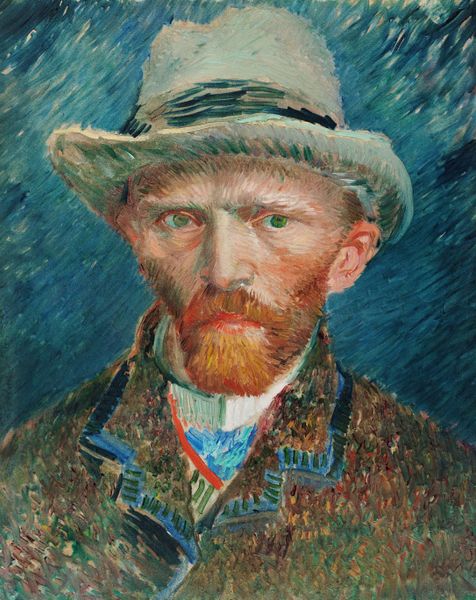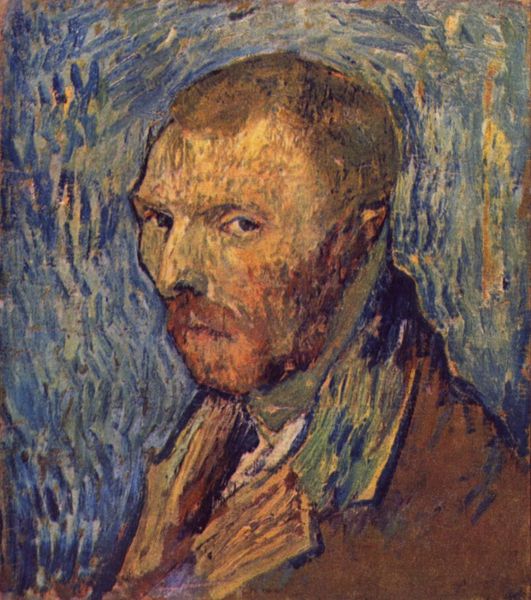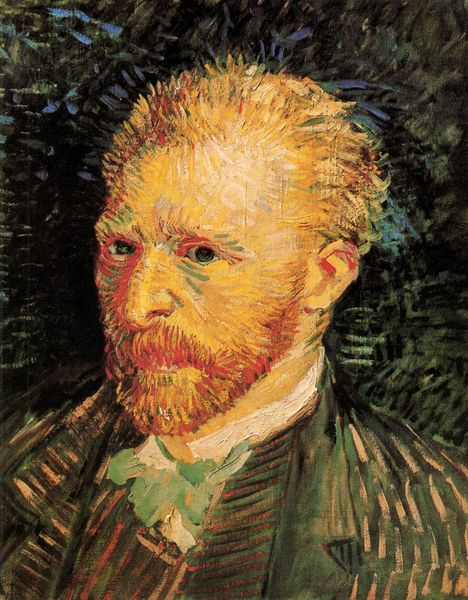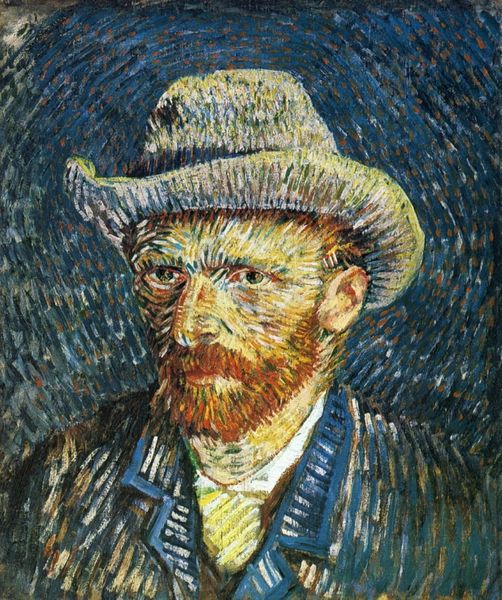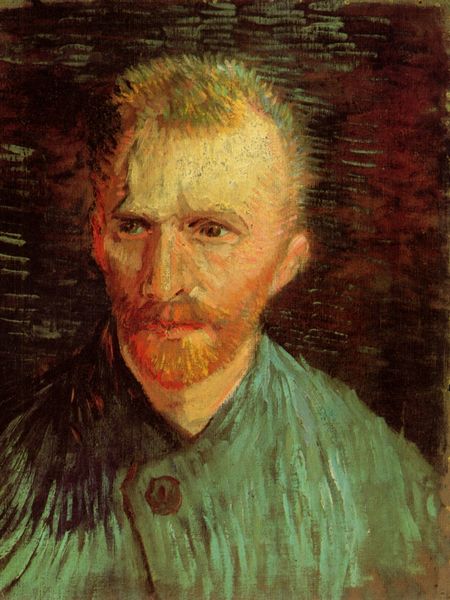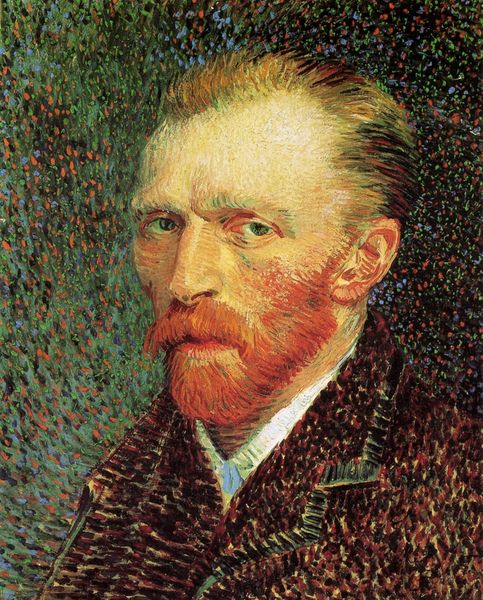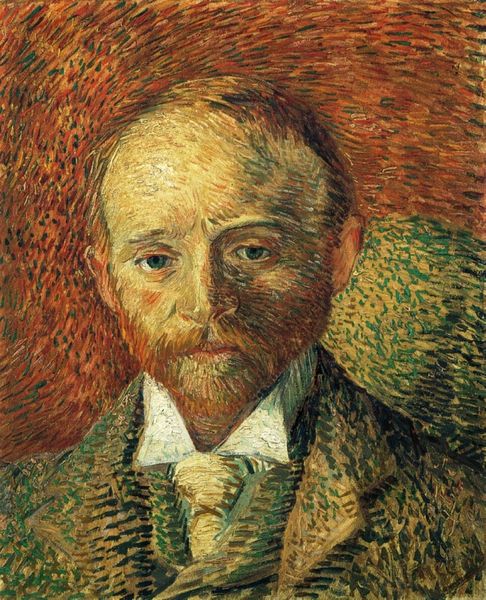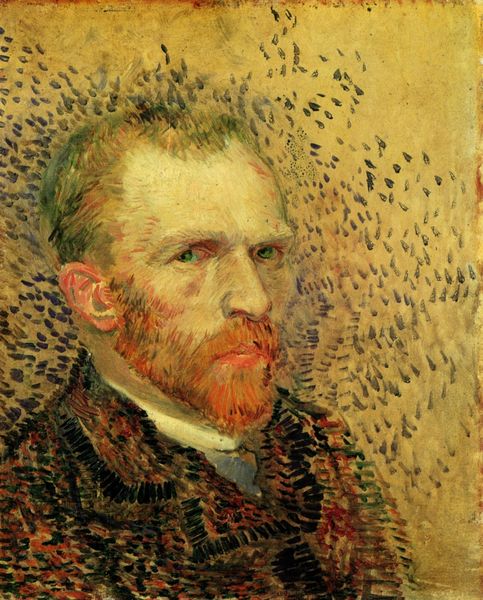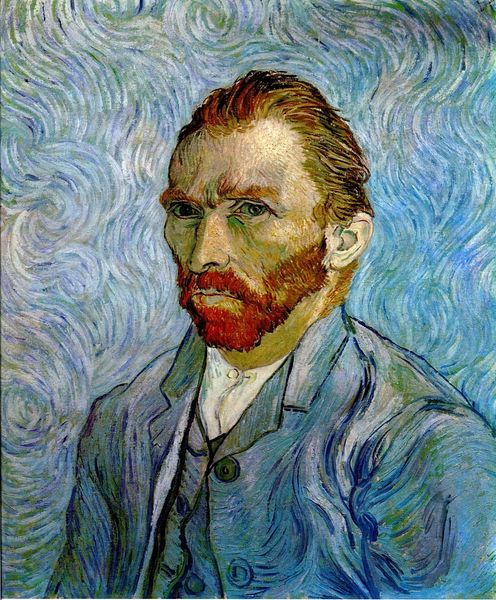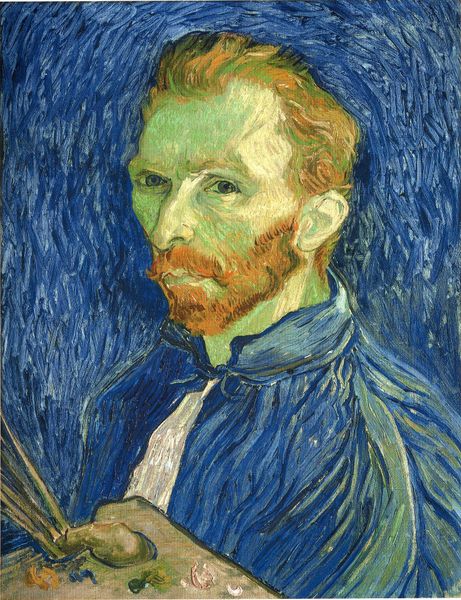
painting, oil-paint, impasto
#
portrait
#
self-portrait
#
painting
#
oil-paint
#
oil painting
#
impasto
#
post-impressionism
Copyright: Public domain
Editor: So here we have Van Gogh's Self-Portrait from 1887, housed at the Kröller-Müller Museum. It’s an oil painting with incredibly thick application of paint – what’s often called impasto. The surface practically vibrates with texture. How do you approach a piece like this? Curator: Immediately, I see a radical engagement with the materiality of paint. Van Gogh isn't just depicting himself; he's showcasing the physical properties of oil paint itself. Look at how the impasto isn't merely decorative, but constitutive. He builds form and expression with deliberate strokes of pigmented paste. Do you see any implications in using the labor to manufacture paint to create another labor product? Editor: That's interesting...So the brushstrokes and texture become almost as important as the likeness itself? The very act of painting, the labor, is laid bare, right? Curator: Precisely. Think about the production of paints in that era. The grinding of pigments, mixing of oils – it’s a deliberate process Van Gogh fully engages with. The value of this artwork shifts, then, from solely the representational to encompass an understanding of the art-making process as labour. What’s he conveying about being a working artist? Editor: I guess, beyond just expressing emotion, he's also commenting on the sheer effort involved in creating art, the physicality of it all. The choice of using cheaper paints would also change our perception. What does his self-portrait mean with better materials versus more common pigments? Curator: Exactly. It provokes questions about artistry, labor, and even class distinctions within the art world. Are we meant to consider artistic labour through this impasto medium as unique? Editor: This really changes how I see it. I was so focused on the expressive elements, but now I recognize this inherent exploration into labor and the materiality of painting. Curator: Seeing beyond the biographical narratives to the artistic production's physical and socio-economic dimensions opens a wider view into Van Gogh's creative practice.
Comments
No comments
Be the first to comment and join the conversation on the ultimate creative platform.
